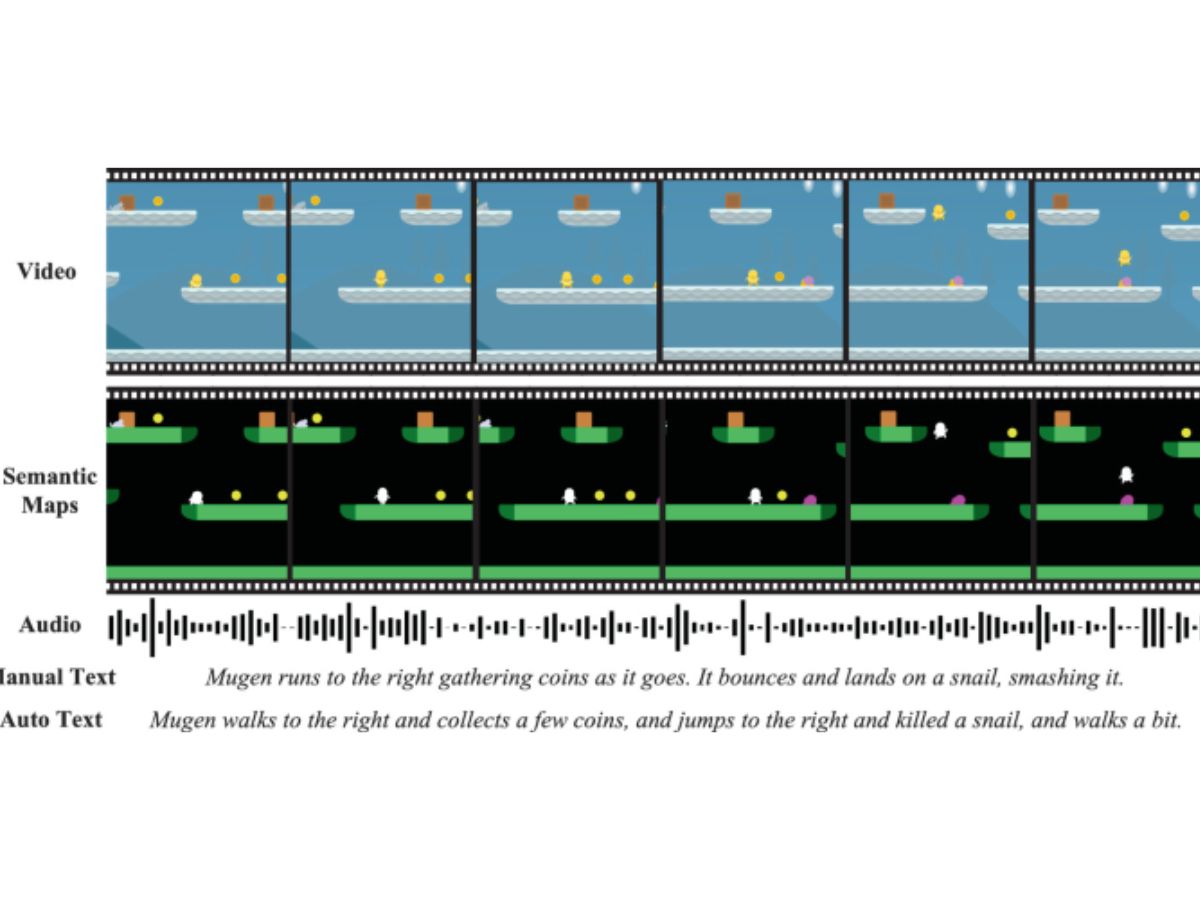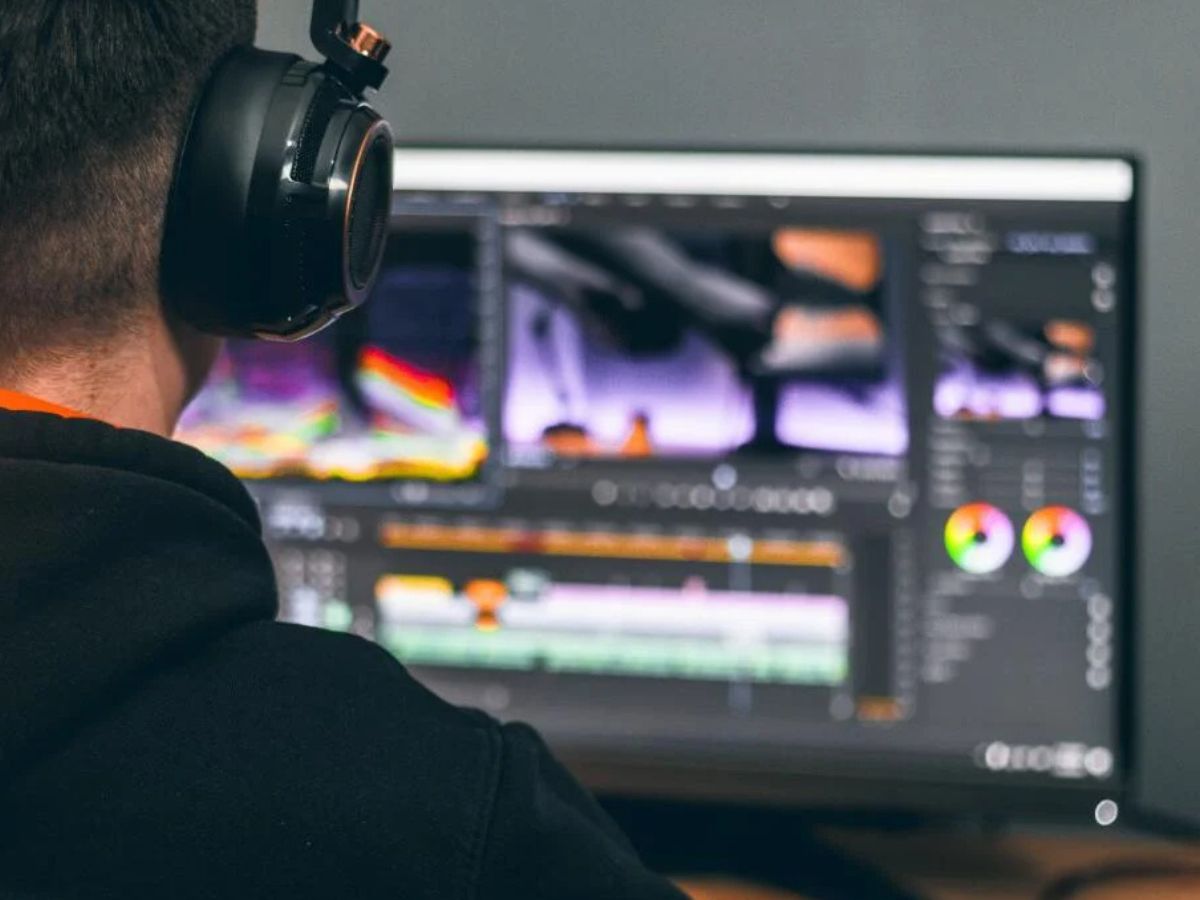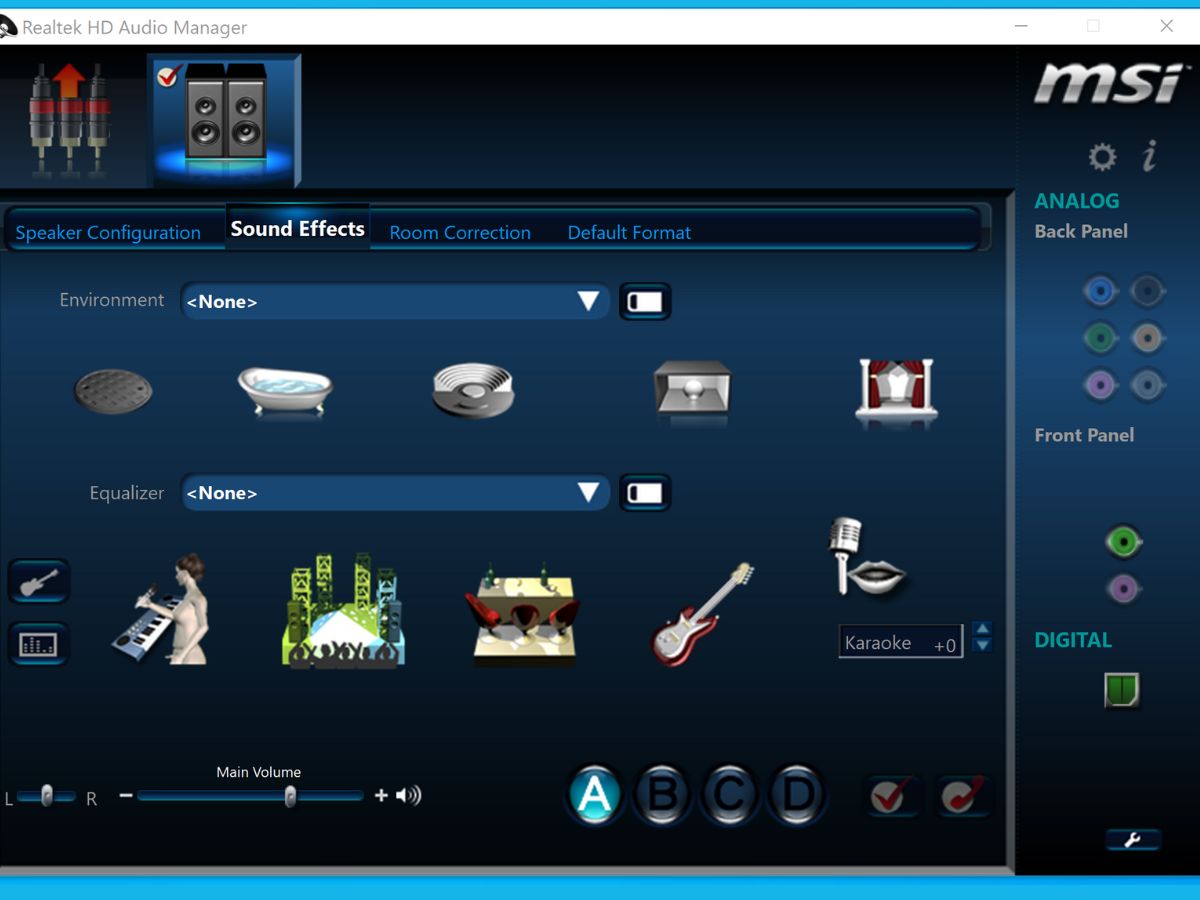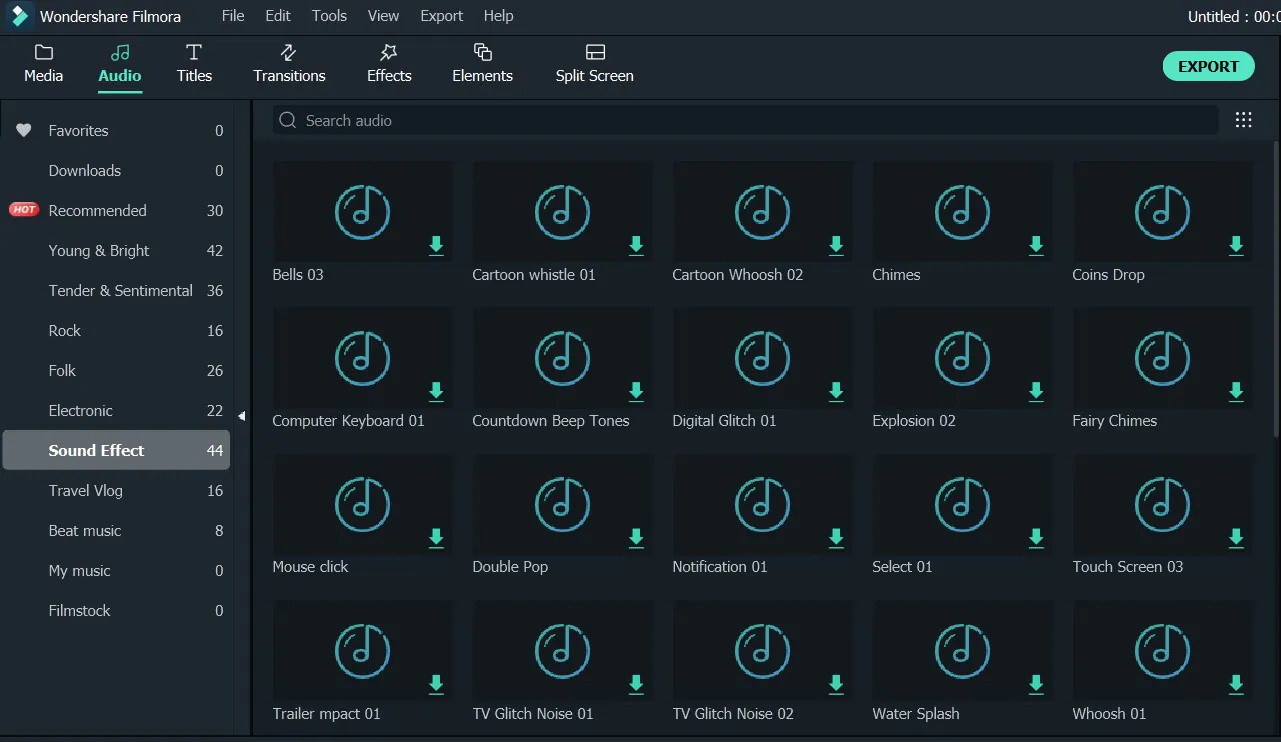Home>Production & Technology>Sound Effects>How To Make Music From Sound Effects


Sound Effects
How To Make Music From Sound Effects
Modified: January 22, 2024
Learn how to create amazing music using sound effects. Discover the art of blending different sounds to compose unique and captivating melodies.
(Many of the links in this article redirect to a specific reviewed product. Your purchase of these products through affiliate links helps to generate commission for AudioLover.com, at no extra cost. Learn more)
Table of Contents
Introduction
Sound effects have the power to transform a simple audio or visual project into a captivating experience. Whether it’s in movies, video games, podcasts, or even marketing campaigns, the strategic use of sound effects can elevate the overall quality and impact of the content.
In this article, we will explore the world of sound effects and discuss how to make music from them. By understanding the fundamentals of sound effects, selecting the right ones, editing and manipulating them, layering and mixing them, and finally adding music to enhance the overall composition, you can create professional and engaging audio projects.
Why are sound effects important?
Sound effects are the auditory elements that accompany visuals or stand alone to create a specific atmosphere, emotion, or perception. They add depth, realism, and immersion to the audience’s experience. For example, in a tense scene in a movie, the sound of footsteps creeping closer can heighten suspense and create a sense of anticipation. In a video game, the sound of a dinosaur roar can make the player feel like they are truly in a prehistoric world.
The impact of sound effects on storytelling
Sound effects have a powerful impact on storytelling. They can enhance the mood, establish the setting, and even convey important information. For example, the sound of thunder and rain can create a gloomy and ominous atmosphere, setting the stage for a horror movie. The sound of a ticking clock can build tension and signify the passing of time in a thriller.
Sound effects as musical elements
While sound effects are typically associated with non-musical audio projects, they can also be used as musical elements. By manipulating and arranging sound effects creatively, you can create melodic and rhythmic patterns that form the basis of a musical composition. This approach adds a unique and innovative touch to your music, allowing you to create interesting and unexpected sounds.
Now that we understand the importance of sound effects and their potential as musical elements, let’s dive deeper into the world of sound effects and explore the process of making music from them.
Understanding Sound Effects
Before diving into the process of making music from sound effects, it’s important to have a solid understanding of what sound effects are and how they are created.
What are sound effects?
Sound effects are artificial or natural sounds that are added to audio or visual media to enhance the audience’s experience. They can range from simple everyday sounds like footsteps or door creaks to complex sci-fi sounds or explosions. Sound effects are typically used to mimic or represent real-world objects, actions, or events, and they can be created and manipulated using a variety of methods and tools.
Types of sound effects
Sound effects can be categorized into various types based on their purpose and characteristics. Here are some common types of sound effects:
- Foley Sound Effects: These are everyday sounds created by a Foley artist, such as footsteps, clothing rustling, or any sound that accompanies the action on screen.
- Environmental Sound Effects: These are sounds that represent the environment or ambiance of a scene, like rain, wind, or city noises.
- Sci-Fi Sound Effects: These are imaginative and futuristic sounds that are often created using synthesizers and digital effects to represent technology or alien worlds.
- Impact Sound Effects: These are powerful and dynamic sounds like explosions, crashes, or punches that create impact and emphasize action.
- Vocal Sound Effects: These are human sounds like screams, grunts, or laughter, which can add emotion and realism to a scene.
Creating sound effects
Sound effects can be created using a variety of methods and techniques. The two primary approaches are:
- Recorded Sound Effects: These are sounds that are captured using microphones in real-world environments or using specialized equipment and techniques. For example, a sound designer might record the sound of breaking glass by actually breaking glass in a controlled environment.
- Designed Sound Effects: These are sounds that are created from scratch using various audio synthesis techniques, virtual instruments, and digital effects. This approach allows for more creative control and the ability to craft unique and unconventional sounds.
Understanding the different types of sound effects and the methods of creating them is essential when it comes to selecting and manipulating them effectively. By having this knowledge, you can make informed decisions and create soundscapes that elevate your projects to the next level.
Selecting the Right Sound Effects
Choosing the right sound effects is crucial in creating a compelling audio composition. The selection process involves considering the context, mood, and desired impact of your project. Here are some tips to help you select the most suitable sound effects:
1. Understand the purpose:
Before browsing through a library of sound effects, it’s important to have a clear understanding of what you want to accomplish. Consider the purpose of the sound effect – is it meant to create a specific atmosphere, enhance a particular scene, or convey a particular emotion? By identifying the purpose, you can narrow down the search and find more relevant options.
2. Consider the context:
The context of your project plays a crucial role in choosing the right sound effects. Determine the setting, time period, and overall theme of your project. This will help you select sound effects that align with the visual or audio elements and create a cohesive experience for your audience.
3. Pay attention to detail:
When selecting sound effects, it’s essential to pay attention to the details. Consider the quality of the sound, the realism or authenticity it portrays, and how well it fits within the overall composition. Choose sound effects that have clear and crisp audio, as this will enhance the overall production value.
4. Experiment and be creative:
Don’t be afraid to think outside the box and experiment with unconventional sound effects. Sometimes, using unexpected sounds can add a unique and captivating element to your project. Try combining different sound effects or modifying them to create something entirely new and exciting.
5. Use reputable sound libraries:
There are numerous online sound effect libraries available, offering a wide range of options to choose from. It’s essential to use reputable libraries that provide high-quality, properly licensed sound effects. This ensures that you have access to a diverse selection of professionally recorded or designed sound effects.
6. Consider copyright and licensing:
Always make sure to check the copyright and licensing information for the sound effects you intend to use. Some sound effects may have specific usage restrictions or require proper attribution. Ensure that you have the necessary permissions to use the selected sound effects in your project to avoid any legal issues.
By following these tips and approaching sound effect selection with careful consideration, you can find the perfect sound effects that complement your project and elevate the overall audio experience for your audience.
Editing Sound Effects
After selecting the right sound effects for your project, the next step is to edit them to fit your specific needs and enhance their impact. Whether you need to trim their length, adjust the volume, or apply certain effects, editing allows you to customize the sound effects to suit your creative vision. Here are some key steps to consider when editing sound effects:
1. Trimming and cropping:
In many cases, the sound effects you choose may have a longer duration than necessary for your project. Use audio editing software to trim and crop the sound effects to the desired length. This will help in maintaining a concise and focused audio composition, eliminating any unnecessary sounds or pauses.
2. Adjusting volume levels:
Ensure that the volume levels of the sound effects are balanced with the rest of your audio content. Use volume automation or gain control in your audio editing software to adjust the levels accordingly. You want to avoid any sound effects overpowering or being drowned out by other elements in your project.
3. Adding effects:
Experiment with adding effects to the sound effects to enhance their impact or achieve a specific ambiance. For example, you can apply reverb to mimic a large, spacious environment or add distortion to create a gritty and distorted sound. Be mindful not to overdo the effects, as it can distract from the overall composition.
4. Layering and blending:
If a single sound effect doesn’t provide the desired depth or richness, try layering multiple sound effects together. This technique can create a more intricate and immersive sound. Experiment with different combinations and adjust the volume levels of each layer to achieve the desired balance.
5. Crossfading:
When transitioning between different sound effects, use crossfading to create a smooth and seamless transition. This technique fades out one sound effect while simultaneously fading in the next, preventing any abrupt cuts or jarring transitions.
6. Syncing with visuals:
If your sound effects are meant to accompany visuals, make sure to sync them accurately. Align the sound effects with the relevant actions or events on the screen to create a synchronized and cohesive audio-visual experience.
By utilizing these editing techniques, you can tailor the selected sound effects to match your project’s specific requirements. Remember, editing sound effects requires both technical skills and creative judgment. Take the time to experiment and fine-tune the effects until you achieve the desired outcome, ensuring that the final audio composition is impactful and harmonious.
Layering Sound Effects
Layering sound effects is a powerful technique that can add depth, richness, and complexity to your audio compositions. By combining multiple sound effects together, you can create a more immersive and dynamic sonic experience. Here are some tips and steps to effectively layer sound effects:
1. Choose complementary sound effects:
Select sound effects that complement each other in terms of mood, tone, and purpose. Look for sounds that work well together and contribute to the overall atmosphere or narrative you want to create. For example, if you’re designing a scene in a rainforest, you might layer sounds of chirping birds, rustling leaves, and flowing water.
2. Balance the volume levels:
When layering sound effects, ensure that their volume levels are balanced. Adjust the individual levels of each sound effect to avoid any one sound dominating the others. The goal is to create a harmonious blend where all the layered effects contribute equally to the overall composition.
3. Experiment with placement in the stereo field:
Explore different positions for each sound effect in the stereo field. Spread them out across the left and right channels to create a sense of width and spatial depth. This can enhance the realism and immersion of your audio composition. Use panning or stereo imaging techniques in your audio editing software to achieve this spatial placement.
4. Consider the timing and sequencing:
Pay attention to the timing and sequencing of the layered sound effects. Ensure that they align with each other and with the visuals if they accompany a video project. Timing is crucial for creating a cohesive and synchronized listening experience. Adjust the start and end points of each sound effect to match the desired timing and rhythm.
5. Use blending techniques:
Blend the layered sound effects together seamlessly by utilizing various audio processing techniques. Apply EQ (equalization) to shape the frequency response and prevent any sonic clashes. Use reverbs or delays to create a sense of space and natural decay within the layered sounds. These blending techniques can help merge the individual sound effects into a cohesive and unified sonic landscape.
6. Maintain clarity and avoid clutter:
While layering sound effects can add depth, be mindful not to clutter the audio composition. Maintain clarity by ensuring that each layered effect has a distinct purpose and contributes to the overall narrative or atmosphere. Too many overlapping or competing sounds can lead to sonic confusion and reduce the impact of your project.
Remember, layering sound effects requires careful listening, experimentation, and a discerning ear. By selecting complementary effects, balancing volume levels, spatially placing the sounds, and blending them together effectively, you can create a rich and immersive audio experience that captivates your audience.
Manipulating Sound Effects
Manipulating sound effects allows you to add your own creative touch and make them more unique and impactful. By applying various techniques and effects, you can transform sound effects to better suit your project’s needs and enhance their overall effectiveness. Here are some ways to manipulate sound effects:
1. Pitch shifting:
Adjusting the pitch of a sound effect can alter its tone and create different emotional reactions. Lowering the pitch can make a sound effect sound deeper, darker, or more ominous, while raising the pitch can make it sound more energetic or whimsical. Experiment with different pitch variations to find the desired effect.
2. Time stretching:
Time stretching allows you to change the duration of a sound effect without affecting its pitch. This technique can be used to slow down or speed up a sound effect, adding tension or creating a sense of urgency. Time stretching can also help align sound effects with specific timings in your project.
3. Reverse playback:
Reversing a sound effect can create an otherworldly or dreamlike quality. It can be particularly effective for creating unsettling or mysterious atmospheres. Additionally, reversing a sound effect can lend itself to unique rhythmic patterns and textures, providing a fresh perspective for your composition.
4. Granular synthesis:
Granular synthesis breaks down sound into tiny grains and manipulates them individually. This technique allows for precise control over sound characteristics such as duration, pitch, and timbre. By using granular synthesis, you can create intricate and evolving textures that add complexity and depth to your sound effects.
5. Filtering and equalization:
Filtering and equalization techniques help shape the frequency content of sound effects. Apply high-pass or low-pass filters to remove unwanted frequencies or create specific effects. Use equalization to enhance certain frequency ranges or make adjustments to improve clarity and balance within the sound effects.
6. Modulation effects:
Modulation effects like chorus, flanger, and phaser can add movement and depth to sound effects. They create subtle variations in the audio that simulate natural, evolving characteristics. Experiment with different modulation settings to achieve interesting textures and make your sound effects more engaging.
Remember, the goal of manipulating sound effects is to enhance their impact and align them with your creative vision. It’s important to approach manipulation with intention and restraint, as excessive changes can distort the original intent of the sound effect. Always listen critically and make adjustments that serve the overall composition while maintaining the desired emotional and narrative impact.
Mixing Sound Effects
Mixing sound effects is the process of blending and balancing multiple sound elements to create a cohesive and impactful audio experience. By adjusting the volume, spatial placement, and frequency content of each sound effect, you can ensure that they work harmoniously together and enhance the overall composition. Here are some essential steps for mixing sound effects:
1. Balance the volume levels:
Start by adjusting the volume levels of each sound effect to create a balanced mix. Ensure that no sound effect is overpowering or drowning out the others. Use your ears and reference tracks to guide you in finding the right balance between the various elements. Aim for a cohesive and unified sound where all the effects contribute to the overall sonic landscape.
2. Create spatial depth:
Use panning or spatial imaging techniques to give each sound effect a specific position in the stereo field. This helps create a sense of spatial depth and immersion for the listener. Place sound effects at different positions to simulate their sources’ locations in a three-dimensional space. For example, if a sound effect represents a car passing from left to right, pan the effect accordingly to enhance realism.
3. Use EQ to shape the frequency spectrum:
Apply equalization (EQ) to shape the frequency content of sound effects. Use EQ to eliminate any unwanted frequencies or resonances that may cause muddiness or clashes in the mix. Boost or cut specific frequency ranges to enhance the clarity and impact of each sound effect. Carefully balance the EQ adjustments to ensure that all the effects coexist harmoniously in the frequency spectrum.
4. Apply dynamics processing:
Consider using dynamics processing techniques like compression or limiting to control the dynamic range of sound effects. Compression can help even out the volume levels from softer to louder parts, making the overall mix more consistent. Add subtle compression to tame any spikes or peaks in the sound effects, resulting in a smoother and more controlled mix.
5. Consider the mix in context:
When mixing sound effects, consider their relationship with music, dialogue, and other audio elements in your project. Ensure that the different elements complement each other and work together seamlessly. Make adjustments as necessary to maintain a good balance and prevent any clashes or masking of important elements.
6. Continuously listen and make adjustments:
Mixing sound effects is an iterative process. Continuously listen to the mix, both individually and in the context of the whole project. Make adjustments as you identify any issues or areas that could be improved. Trust your ears and aim for a mix that sounds pleasing and serves the overall narrative and emotional impact of your project.
By following these steps and using your creativity, you can achieve a well-balanced and immersive mix of sound effects. Remember to regularly reference your mix on different playback systems to ensure it translates well across different platforms and devices.
Adding Music to Sound Effects
Combining music with sound effects can elevate your audio project to the next level by enhancing the emotional impact, conveying atmosphere, and providing a cohesive auditory experience. Here are some key considerations and techniques for effectively adding music to sound effects:
1. Match the mood and tone:
Select music that aligns with the mood, tone, and overall message of your project. The music should complement and enhance the sound effects, creating a cohesive sonic experience. Whether you need an intense and dramatic score or a light and uplifting melody, choose music that resonates with the intended emotions and enhances the impact of the sound effects.
2. Understand the narrative:
Take into account the narrative and storyline of your project when selecting music. The music should support and reinforce the storytelling elements, providing cues and enhancing the audience’s understanding and engagement. Consider the arc of the project and how the music can enhance key moments, transitions, or plot developments.
3. Use music as a bridge:
Music can serve as a bridge between different scenes or sound effects, creating a seamless flow throughout your project. Choose music that helps transition between scenes or sections, guiding the listener through the auditory journey. Consider the pacing and timing of the music to ensure it aligns with the pace of the sound effects.
4. Dynamics and mixing:
Pay attention to the dynamics and mixing of both the music and sound effects to achieve a balanced and cohesive mix. Ensure that the music doesn’t overpower the sound effects or vice versa. Use dynamics processing and volume automation to carefully blend the two elements, allowing them to work harmoniously together.
5. Timing and synchronization:
Sync the music with the visuals or specific events in your project to enhance the impact of the sound effects. Align important musical cues with visual elements or key moments to create a more immersive and synchronized experience. Ensure that the timing of the music and sound effects is aligned, creating an effective audio-visual connection.
6. Consider licensing:
If you are using pre-existing music, make sure you have the proper licensing and permissions to use the music in your project. There are various platforms and services that offer royalty-free or licensed music specifically designed for audio and visual projects. Be mindful of copyright restrictions and ensure you are using the music within the legally permitted usage terms.
By thoughtfully combining music with sound effects, you can create a captivating and immersive audio experience for your audience. The music should complement the sound effects, enhancing the emotions, atmosphere, and overall impact of your project. Experiment with different musical styles, techniques, and combinations to find the perfect blend that enhances and elevates your audio composition.
Conclusion
Incorporating sound effects into your audio projects can take them to new heights, immersing your audience in a rich and captivating sonic experience. By understanding sound effects, selecting the right ones, editing and manipulating them, layering and mixing them, and adding music to enhance their impact, you can create professional and engaging compositions.
Sound effects have the power to convey emotions, establish atmosphere, and enhance storytelling. They can range from everyday sounds to fantastical sci-fi effects, all of which serve a specific purpose in your project. By carefully selecting sound effects that align with the context, mood, and narrative of your project, you can create a more immersive and engaging experience for your audience.
Editing and manipulating sound effects can further enhance their effectiveness. Trimming and cropping, adjusting volume levels, and applying effects allow you to customize the sound effects to fit your project’s specific needs. Layering multiple sound effects together adds depth and complexity, creating a more dynamic audio composition.
When mixing sound effects, finding the right balance, managing spatial placement, refining frequency content, and making use of dynamics processing techniques ensure that all the elements work harmoniously together. Lastly, adding music to sound effects can provide an emotional and narrative connection, enhancing the overall impact of your project.
As you embark on your journey to make music from sound effects, remember to explore, experiment, and trust your creative instincts. Sound effects offer endless possibilities, so don’t be afraid to push boundaries, think outside the box, and create unique combinations. Through careful selection, editing, layering, mixing, and the integration of music, you can craft truly remarkable audio compositions that captivate and engage your audience.











